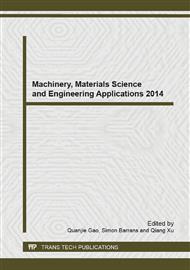p.503
p.509
p.513
p.517
p.521
p.526
p.531
p.535
p.540
Research on Complex Equipment Reliability Growth AMSAA-ELP Model Based on Explore Learning Promotion
Abstract:
According to learning other models equipment test information of complex equipment in the development process, and making their own systems to improve the reliability of the case, a complex equipment reliability growth AMSAA-ELP model based on explore learning promotion was developed, and the property was analyzed from different parameter values. Additionally, the trend test was also presented. Secondly, maximum likelihood estimation formula of the parameters was given under time censored and failure censored test of AMSAA-ELP model, and point out that there are multiple poles value of the maximum likelihood estimate can use pseudo-Monte-Carlo method parameter calculation. Additionally, the model's goodness of fit test was also given. Finally, the combination of complex equipment with engine failure data was analyzed. The results shows that the AMSAA-ELP model is prefer to AMSAA model intended to test data, and the AMSAA-ELP model is suitable to the engineering applications.
Info:
Periodical:
Pages:
531-534
Citation:
Online since:
June 2014
Authors:
Price:
Сopyright:
© 2014 Trans Tech Publications Ltd. All Rights Reserved
Share:
Citation:


